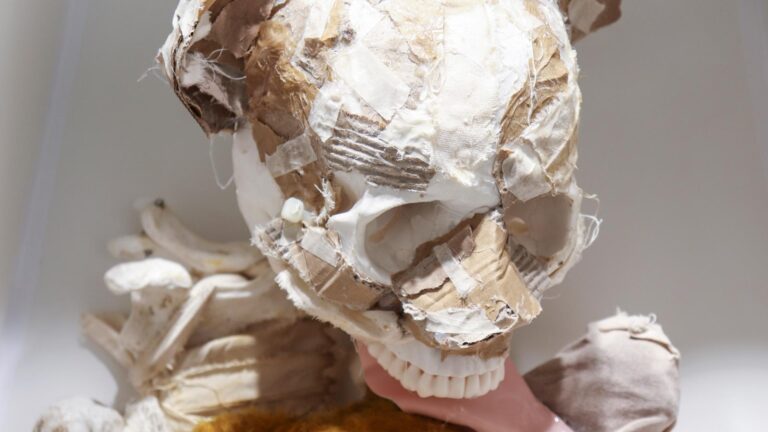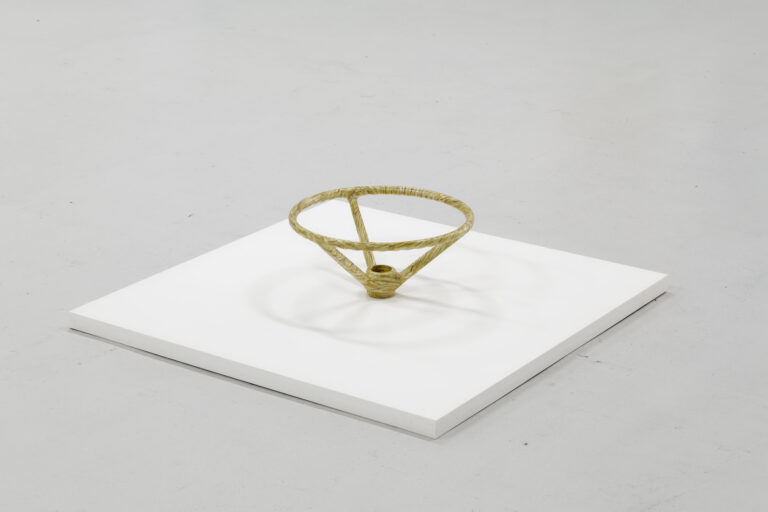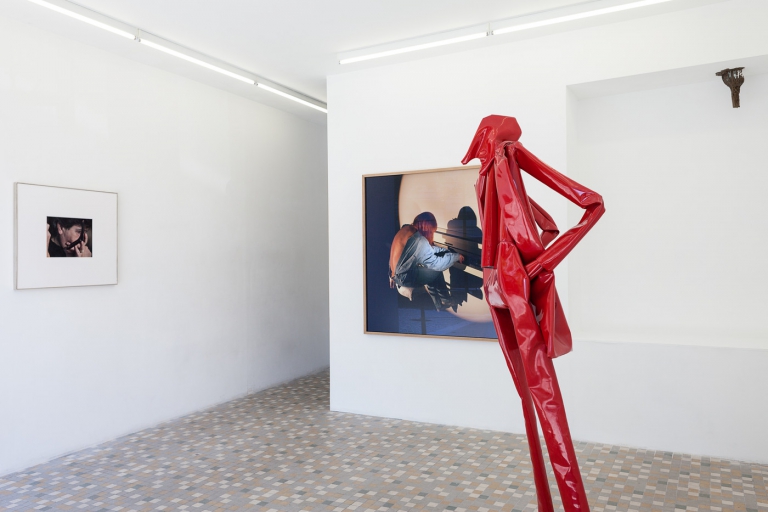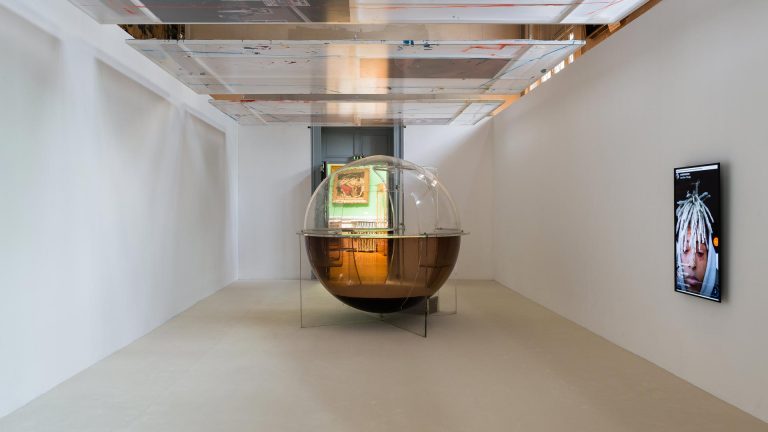Florian Pumhösl’s latest body of work consists of marks—straight or curved lines and dots of varying sizes—on smooth panels of cast plaster. The marks are of reddish ocher, and on closer inspection, one can see that they are hand-engraved into the plaster. The carving of these lines is fragile, their compositions precise. However, these lines are not smooth. When viewed up-close, one notices rough edges of these finely etched lines, indicating the inherently forceful nature of the act of cutting into a physical surface. The incisions cluster and disperse, they are springy. Yet, one can sense the orientation of these marks is horizontal, from left to right, and suggests temporal progression. They imply an affinity with musical scores.
Each of these plaster pieces is based on a red chalk drawing on paper. These drawings were inspired by the graphic scores of composer Roman Haubenstock-Ramati (1919–1994), an influential figure in Vienna during the 1970s and 80s, whose works were associated with musique concrète and notable for incorporating ideas from visual art. “Departed from”, and not “based on”, as Pumhösl took visual elements from the scores and subjected them to an intense process of drawing, that is rearranging, breaking apart, reassembling, compressing and expanding them. A set of drawings was selected from this group, which became the basis for the etched plasters. The works are relatively small, the largest piece in the group only measuring 39 cm by 25 cm, meaning that the plaster pieces maintain the intimacy of the drawings’ scale. As pictures made not through addition of material, but through subtraction of matter from surface, they offer an unusual experience of depth.
By definition, scores are not the final product, but an instruction for generating that product in the form of music. Graphic scores, though they require musicians to have special training to read them, are no different. They are a guide for creating temporal acoustic experiences, made manifest by musicians. What happens if a non-musician uses graphic scores as directions? He then proceeded to answer this question by “rehearsing” the scores of Haubenstock-Ramati, using drawing, the medium he is most adept at wielding. One can see how the density of composition modulates from piece to piece. They do not make what directs the concentration or sparseness of marks explicit, but one can easily sense that there is an internal logic that guides how each picture is organized, comparable to how music progresses. Much like the same composition could never be played in exactly the same way even by the most accomplished musician, the marks applied by hand could never be perfectly repeated.
Abstraction saw numerous attempts at such decoupling of form and content. Dadaist mechanical drawings for example, where no engineering purposes were assigned to seemingly technical drawings. These were instructions without objectives, technological plans with no aim. Similarly, works of Pumhösl carry the traces of their sources. One can see how the density of composition modulates from piece to piece. They do not make what directs the concentration or sparseness of marks explicit, but one can easily sense that there is an internal logic that guides how each picture is organized, echoing how the score progresses.
-Yuki Higashino


























